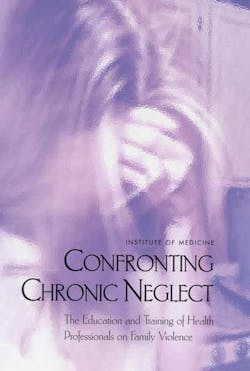Hearing the silent cry for help Part II: recognizing the signs of intimate partner violence
Domestic Violence (DV) or Intimate Partner Violence (IPV) happens to people of all ages and socioeconomic levels. Tragically, the problem is often denied, overlooked, or even excused. Oral health-care professionals have an opportunity to impact more than a patient’s oral health. They can learn to recognize the signs of an abusive relationship, which is the first step to ending it.
Advocating for patients may involve making a referral when IPV is suspected or confirmed by the patient. Oral health-care professionals may not be mandated reporters in their state or province for IPV; however, that does not waive their responsibility to advocate for the patients. IPV is a problem that can have a devastating impact on all segments of society.(2)
Some signs of abuse may include but are not limited to:
- Afraid or anxious to please partner
- Trouble swallowing
- Voice changes
- Checking in often with partner
- Receiving frequent, harassing phone calls from partner
- Talking about partner’s temper, jealousy, or possessiveness
- Having frequent injuries, with the excuse of “accidents”
- Dressing in clothing designed to hide bruises or scars (e.g., wearing long sleeves in the summer or sunglasses indoors)
- Restricted from seeing family and friends
- Rarely going out in public without partner
- Limited access to money, credit cards, or car
- Major personality changes (e.g., an outgoing person becomes withdrawn)
- Depressed, anxious, or suicidal(3)
Research has indicated that education on this topic improves knowledge of and attitudes toward the topic.(4) Philips Oral Healthcare has partnered with Mid-Atlantic P.A.N.D.A. (Prevent Abuse and Neglect through Dental Awareness).(5) Philips offers two successive one-hour continuing educations courses online to educate the dental community on the Philips Learning Center. Philips is an approved AGD/PACE Program Provider.(6) The webinars include information on recognizing child, spouse, and elder abuse, along with education on recognizing human trafficking.
Even if you are not required to take the course for licensure, the education received may help you to save someone’s life. The intent of this article is not to completely educate someone on the signs of Intimate Partner Violence, it is meant as encouragement to seek out education on the subject.
Women don’t have to live in fear. In the U.S., call the National Domestic Violence Hotline at 1-800-799-7233 (SAFE).
Linda Blackiston, RDH, BS, is Philips Oral Healthcare Professional Education Manager Mid-Atlantic. Linda volunteers with Mid-Atlantic PANDA, providing courses on recognizing and reporting cases of abuse and neglect. She serves on The Samaritan Women board of directors, which is a long-term restoration program for victims of human trafficking. She also volunteers to educate the community on human trafficking issues.
References
1. Black MC, Basile KC, Breiding M, et al. (2011). The National Intimate Partner and Sexual Violence Survey (NISVS): 2010 Summary Report. Atlanta, GA: National Center for Injury Prevention and Control, Centers for Disease Control and Prevention. http://www.cdc.gov/violenceprevention/pdf/nisvs_executive_summary-a.pdf.
2. Committee on the Training Needs of Health Professionals to Respond to Family Violence, Division of Behavioral and Social Sciences and Education, Board on Children, Youth, and Families. National Academies Press, Apr 4, 2002 - Social Science - 368 pages. http://books.google.com/books?id=3vMreEtB7BQC&lr=&source=gbs_navlinks_s.
3. http://www.helpguide.org/mental/domestic_violence_abuse_types_signs_causes_effects.htm.
4. Danley D, Gansky SA, Chow D, Gerbert B. Preparing dental students to recognize and respond to domestic violence: The impact of a brief tutorial. JADA, 135 (1), 67-73. 2004.
5. Mid-Atlantic P.A.N.D.A. http://www.midatlanticpanda.org/
6. Philips Learning Center. https://www.theonlinelearningcenter.com/dental-continuing-education.aspx.









